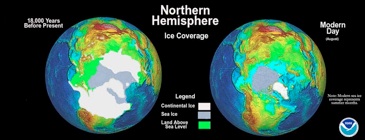Ice Core 101
An ice core is a cylinder shaped sample of ice drilled from a glacier. Ice core records provide the most direct and detailed way to investigate past climate and atmospheric conditions. Snowfall that collects on glaciers each year captures atmospheric concentrations of dust, sea-salts, ash, gas bubbles and human pollutants. Analysis of the


physical and chemical properties of an ice core can reveal past variations in climate ranging from seasons to hundreds of thousands of years. Ice core records can be used to reconstruct temperature, atmospheric circulation strength, precipitation, ocean volume, atmospheric dust, volcanic eruptions, solar variability, marine biological productivity, sea ice and desert extent, and forest fires.








GISP2
Ice Core
The GISP2 ice core in Greenland was drilled as deep as 2 miles.
Examples of aerosols and chemical elements that are transported and deposited on ice sheets and glaciers.




Ice cores provide excellent seasonal markers allowing very accurate dating. Seasonal markers such as stable isotope ratios of water vary depending on temperature and can reveal warmer and colder periods of the year. Other seasonal markers may include dust; certain regions have seasonal dust storms and therefore can be used to count individual years. Dust concentrations may be high enough to be visible in the ice.

Annual dating can be verified by “dating horizons” such as well-known volcanic eruptions.
Large peaks in sulfate ( SO42-) can be used to identify input from volcanic sources. The 1815 Tambora Eruption, responsible for the “year without a summer”, is a commonly used “dating horizon” that has been found in ice cores around the Earth.

Visible annual dust layers.



In addition, “dating horizons” include the prominent increase in atmospheric radioactivity (e.g. 36Cl-, Tritium, and beta activity) seen in ice cores that reflect above ground nuclear bomb tests that began in the 1940s and peaked in the early 1960s.






Ice Core Climate Reconstructions

Ice core records have allowed well dated reconstructions of past temperatures over hundreds of thousands of years. Stable water isotopes, such as deutrium (dD), have a known relationship with temperature and therefore have been used to infer past temperatures. Temperature
Glacial (G)
Interglacial (IG)
reconstructions clearly show glacial and interglacial periods. A glacial period is an interval of time (~100 thousand years) that is marked by colder temperatures and glacier advance.. Interglacial periods are time intervals of warmer global temperatures (~10-20 thousand years) that separate glacial periods. The Holocene is the current interglacial and it has persisted for the last ~11 thousand years. Comparison between ice core temperature reconstructions and ice core CO2 records revealed that glacial periods (colder) coincided with lower CO2 concentrations, while interglacial periods (warmer) with higher CO2 concentrations. The similar temperature and CO2 trends are consistent with the nature of greenhouse gases (GHGs); the higher the concentration of GHGs in the atmosphere the greater the amount of heat that can be “trapped” in the atmosphere. It is important to note, that the similar trends in CO2 and temperature is not a just a simple cause and effect relationship as other factors are influential (e.g. orbital changes, ocean solubility of CO2, land surface changes, ice sheet extent). However, most of the correspondence is consistent with a feedback between carbon dioxide and temperature.
Volstok Ice Core, Antarctica

Atmospheric Circulation
Atmospheric circulation patterns are a fundamental component of the climate as they transport heat, moisture, gases, and aerosols (e.g. dusts, sea salts, pollution) throughout the planet. Ice cores can be used to investigate past atmospheric conditions by revealing and understanding relationships between modern ice core chemistry and modern instrumental climate data such as atmospheric circulation variables: wind speed and surface pressure).




GISP2 and Siple Dome Ice Cores
Atmospheric Circulation Reconstructions

Clearly established relationships between ice core chemistry and atmospheric circulation variables can then be used to reconstruct past climates. For example, in the Greenland ice core (GISP2), sea salts (sodium(Na+)) and continental dust (non-sea salt calcium (nssCa2+) and non-sea salt potassium (nssK+)) concentrations strongly correlate to regional wind strengths (the westerlies) and to the semi-permanent pressure centers (the Icelandic Low and the Siberian High). The correlations reflect that the strengthening of regional wind speeds and the Siberian High and deepening of the Iceland low lead to enhanced entrainment and transport of sea salts and dust; meaning higher concentrations in the ice core.
Temperature


Similar relationships between ice core chemistry and atmospheric circulation are found in the Siple Dome ice core record in Antarctica. Calcium and sodium records reveal strong relationships to westerly circulation and the Amundsen Sea low. Revealing strong atmospheric circulation-ice chemistry relationships allows interpretations of atmospheric circulation before the instrumental period. Atmospheric circulation reconstructions that go back thousands of years and help us understand natural variability and provide important perspective on the modern climate conditions.
